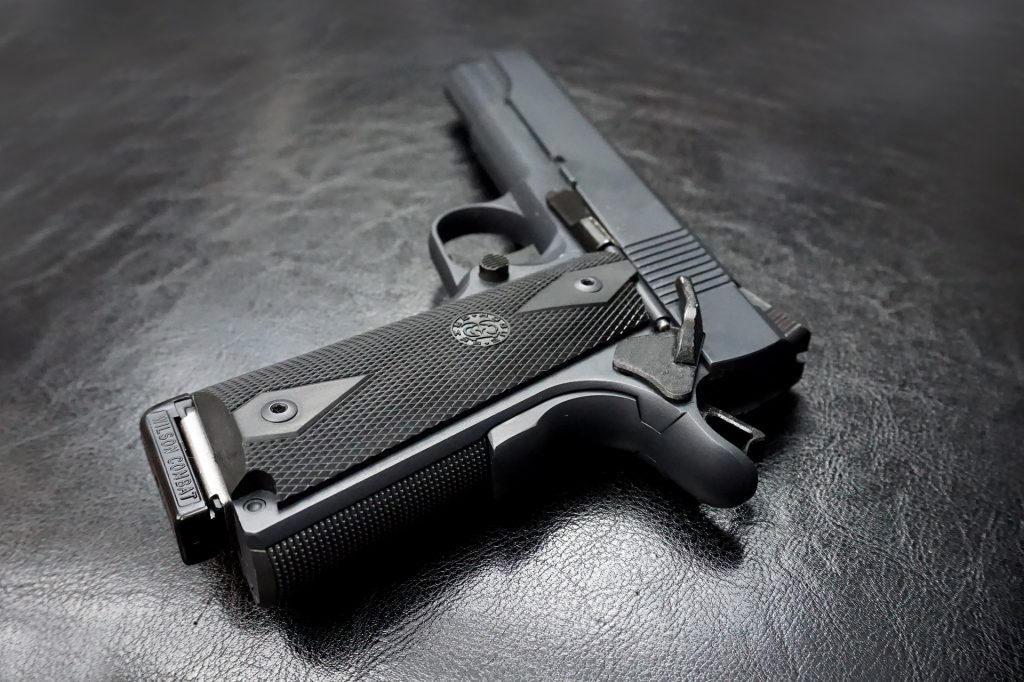What’s Causing City’s Rise in Shootings?
The statistics are overwhelming. The solutions are less unanimous.
Milwaukee, like many other cities, suffered a substantial spike in fatal and nonfatal shootings in the past two years. The most obvious cause was the pandemic and the resulting frustration from shutdowns. The same frustrations seem to be responsible for Milwaukee’s outbreak of dangerous driving.
The series of numbers represent the total of all three. In Milwaukee, guns are the weapon of choice. The easy availability of guns, particularly handguns which are easy to conceal made the behavior far more dangerous. In 2021, handguns represented about 95% of the weapons used in shootings, where the weapon was known.
The next graph shows the most common triggers leading up to the shooting, as reported by the Milwaukee police. Note that about a third of the shootings result from an argument gone bad. But of those incidents for which the cause is known, arguments triggered half of them.
This is consistent with the findings in Milwaukee and other cities: in a large proportion of shooting incidents the victim and perpetrator know each other: friends, relatives, and spouses.
The next graph shows something of a portrait of Milwaukee’s shooting suspects and their victims. In terms of demographics—age, race gender, and ethnicity—suspects look much like their victims. A young Black man is most likely to be shot. His shooter also fits the same description. As a result, Milwaukee’s Black community has been particularly hard hit by the current epidemic of gun violence.
One obvious strategy to confront the issue is to reduce the number of concealed weapons—or at least increase the restrictions on obtaining them. Over the years the Marquette Poll has asked respondents a number of questions regarding gun policies. It asked whether or not they would favor a proposed law that would allow residents to carry concealed handguns without needing to obtain a license. The next graph shows the results based on party affiliation.
There was bipartisan opposition to the proposal. While opposition was stronger among Democrats, a majority of Republicans were also opposed.
There was similar consensus on a question on gun shows. Over the years, the poll asked whether respondents supported background checks for sales at gun shows. As can be seen below, there was overwhelming bipartisan support. (At one point, the poll noted that Republican Senator Ron Johnson opposed background checks. That had the effect of turning Republicans’ strong support for background checks into a rough tie.)
The apparent public consensus that more restrictions are needed on guns does not seem to be reflected in the Wisconsin Legislature, if judged by four proposed laws it recently passed that were vetoed by Governor Tony Evers:
- SB 570 would have limited civil liability for firearm, firearm accessory, and ammunition manufacturers, distributors, importers, trade associations, sellers, and dealers. This would have been in addition to the protections already offered by the federal Protection of Lawful Commerce in Arms Act.
- AB 518 would have allowed residents of other states to carry concealed weapons in Wisconsin even if their state did not require a background check in order to get a permit.
- AB597 would have allowed possession of a firearm by a licensee in a place of worship located on the grounds of a private school.
- AB495 would have allowed possession of a firearm in a vehicle on school grounds by a person with a license to carry a concealed weapon.
What explains the seeming disconnect between the voters’ general desire for more restrictions on firearms and the Legislature’s attempts to further loosen them up? Partly this may reflect the illusion of many that guns can help protect them. This shows up in a survey from the Pew Research Center which asked three groups of people—gun owners, people with guns in their household, and household with no guns–whether having a gun in one’s household makes one safer:
While one can certainly find anecdotes where “a good guy with a gun” prevented violence, the outcome suggested by the Milwaukee data, where the presence of a gun turns an argument into a fatality, seems much more common. This is also suggested by the bulk of national research. For example:
- A meta-analysis based on 16 studies and published in the Annals of Internal Medicine estimated that having a gun in the house increased the probability of suicide by three times and doubled the chance of homicide.
- A study published in the New England Journal of Medicine: “Rather than confer protection, guns kept in the home are associated with an increase in the risk of homicide by a family member or intimate acquaintance.”
Another factor that might contribute to the mismatch between the public desire to reduce the number of guns and legislation adopted to make gun purchasing and carrying easier may be the effect of Wisconsin’s extreme gerrymander. Gerrymanders work through what is called “packing and cracking.” Packing works by putting as many of the other party’s voters into a few districts. Cracking takes a large number of taking potentially competitive districts and adding a sufficient number of one’s own party’s voter to assure a safe majority. The result is a large number of districts in which victory is determined by the partisan primary, not the general election. This, in turn, results in dominance by the party’s base.
That means dominance by the most ideological voters, and in the case of today’s Republican Party, those who equate freedom with guns.
Data Wonk
-
Life Expectancy in Wisconsin vs. Other States
 Dec 10th, 2025 by Bruce Thompson
Dec 10th, 2025 by Bruce Thompson
-
How Republicans Opened the Door To Redistricting
 Nov 26th, 2025 by Bruce Thompson
Nov 26th, 2025 by Bruce Thompson
-
The Connection Between Life Expectancy, Poverty and Partisanship
 Nov 21st, 2025 by Bruce Thompson
Nov 21st, 2025 by Bruce Thompson





























The primary cause is guns. No guns. No shootings.
And now the leading cause of death in children and youths is guns.
https://www.forbes.com/sites/ninashapiro/2022/04/18/the-leading-cause-of-death-in-children-and-youths-is-now-guns/?sh=6f141fe71705
But the important thing is – they were born.
Studies have shown that their is actually a higher gun ownership per household in the suburbs. With 90% less gun violence in the surrounding suburbs we can see that people are the problem and not necessarily only the guns.
Owning a car (or a family member owning a car) is positively correlated with dying in a vehicle. It’s not obvious to me that guns are at fault as that would make mine defective.
Maybe solution to increase in gun crimes was to not cause the frustration associated with pandemic shut downs (recognize the financial and emotional consequences of government shutdowns).
Another solution would be to teach those most likely to commit gun crimes (see charts) some deescalation and problem resolution skills while expanding their economic opportunities. At least these solutions have a chance of being supported – the country is remains divided on more gun laws.
@Ryan Cotic – Gun violence was rarely seen in Milwaukee until Ronald Reagan destroyed America’s labor unions and 95% of America’s manufacturing jobs.
Poverty, guns, and the Republican Party are the problem.
Dear Bruce Why is it that you refuse to engage me in any conversation much less one that would address what should be horrifying 800 victims who are of color and 400 suspects who are of color.
Each shooting is all about the BRAIN of the person whose finger is on the trigger. Yes all of the suspects have significant BRAIN injuries and until they are addressed we will continue to have victims and suspects. Call me 414 403 1341
Peace Tom Spellman
Bruce, you missed the opportunity to include the numbers for death by self-inflicted gunshots. According to the CDC, there were 45,979 suicide deaths in the US in 2020. 52.83% of suicide deaths involved guns. White males account for 69.68% of suicide deaths. That rate is significantly higher in suburban and rural areas. Here is the real kicker, 70% percent of all gun fatalities were the resulted of self-inflicted gun shoots.
Another disturbing trend is declining homicide “clearing” rates. From the “Murder Accountability Project”,
“Much attention has been given to the recently released 2020 Uniform Crime Report showing nearly a 30 percent increase in homicides in the United States, the largest single-year rise on record. But little regard has been paid to an equally disturbing trend. Law enforcement agencies cleared only 54 percent of homicides by arresting and formally charging the suspected killers, according to the FBI’s Criminal Justice Information Services (CJIS). That is the worst single-year drop and the lowest murder clearance rate on record”.
The clearing rate was 91 percent in 1965. Furthermore, while most homicides are the result of gun violence an estimated 24,300 people died from suicide involving a firearm compared to 19,400 by homicide.